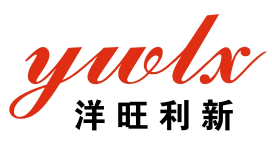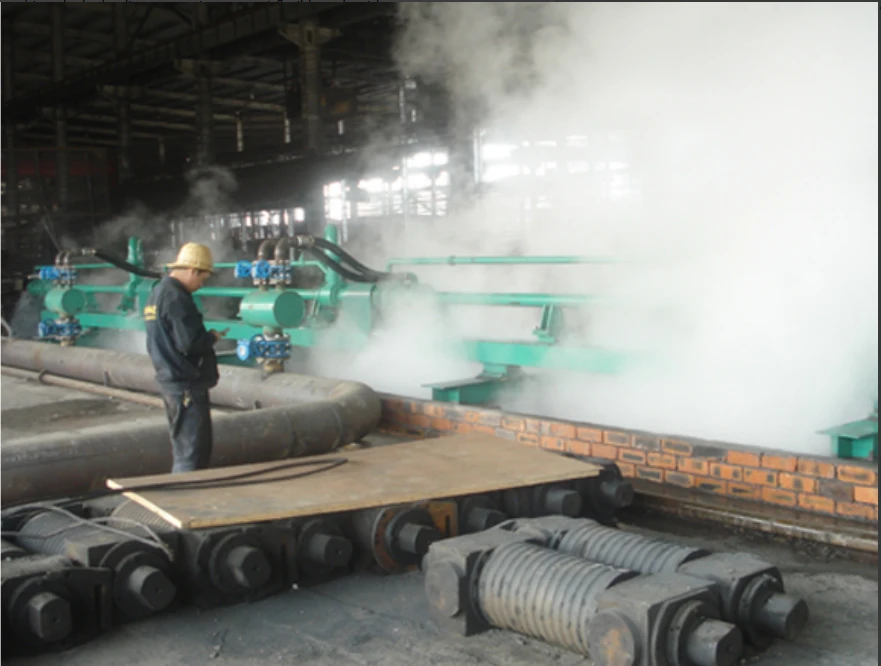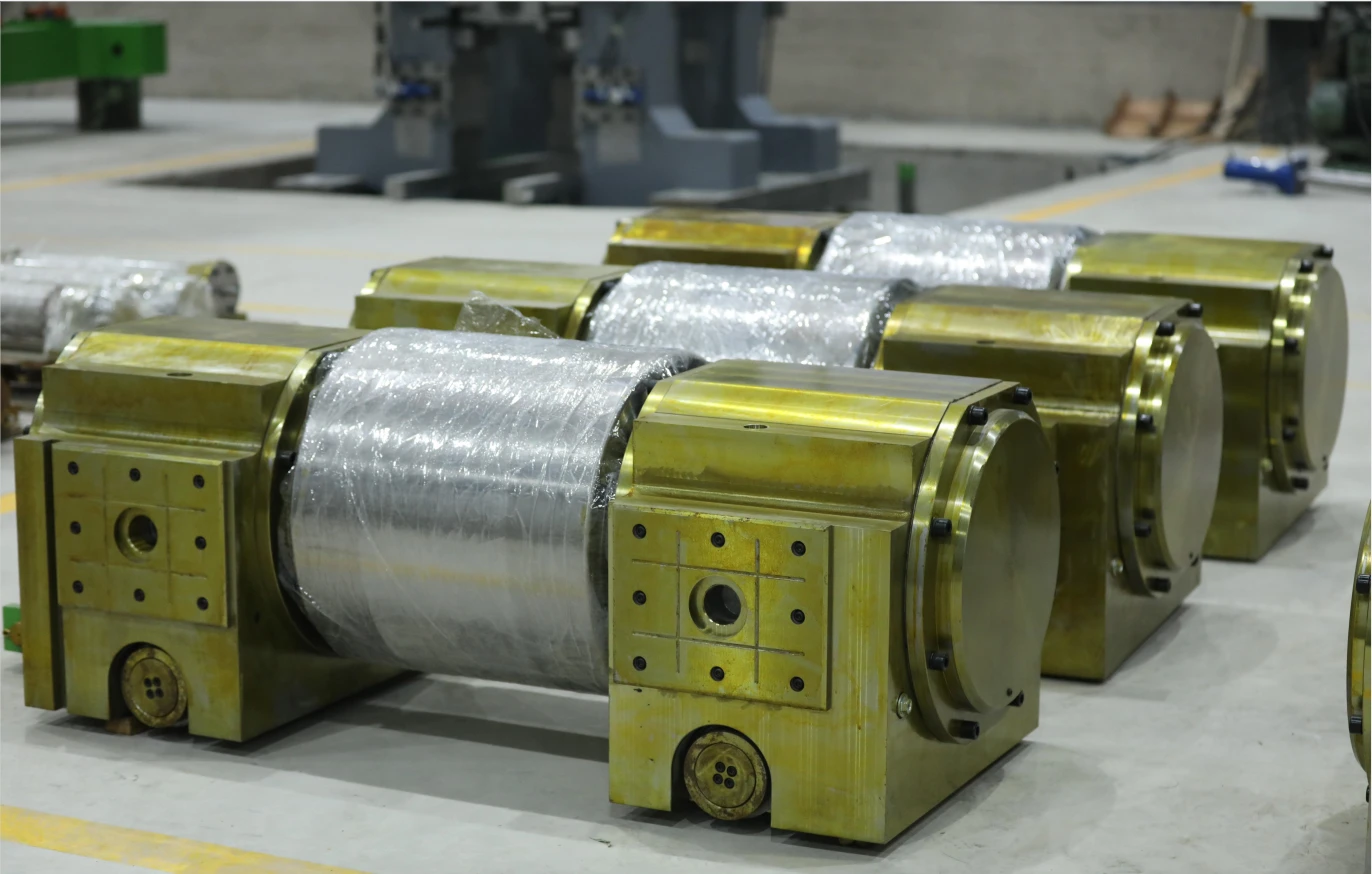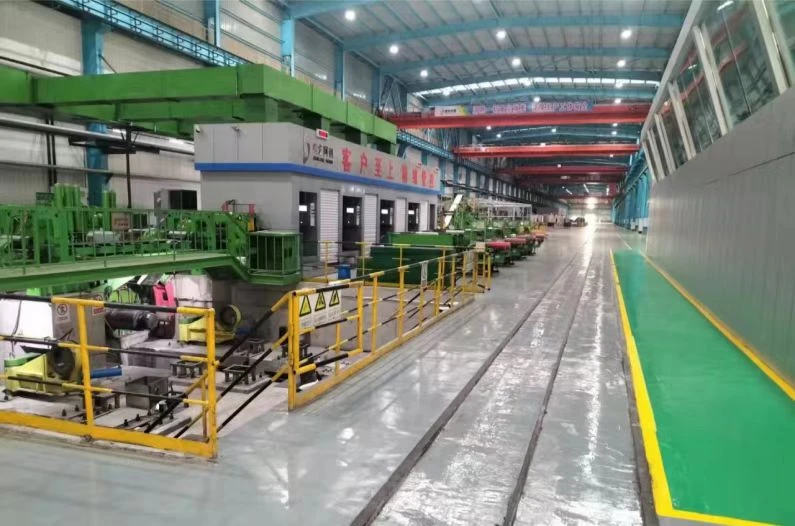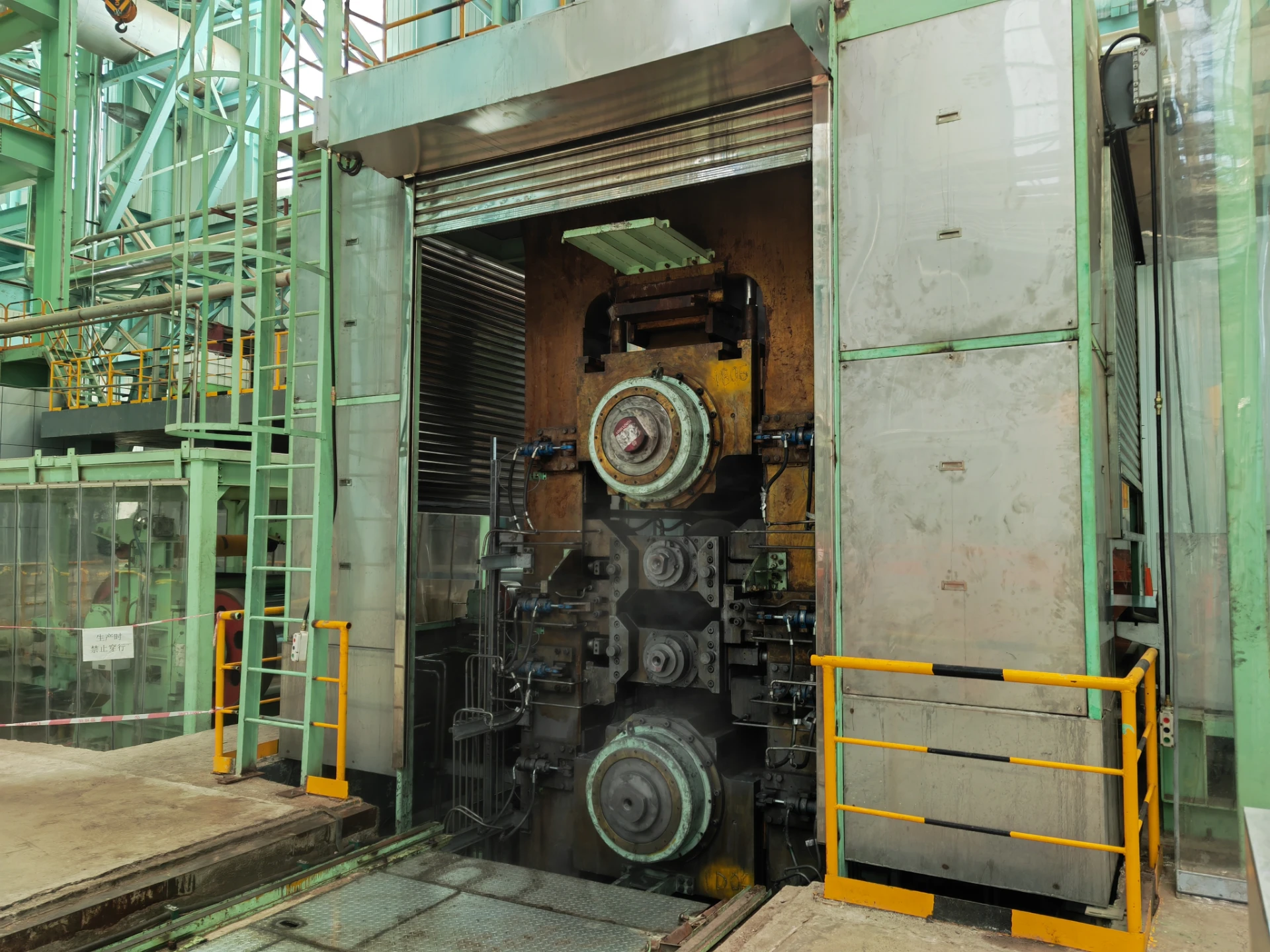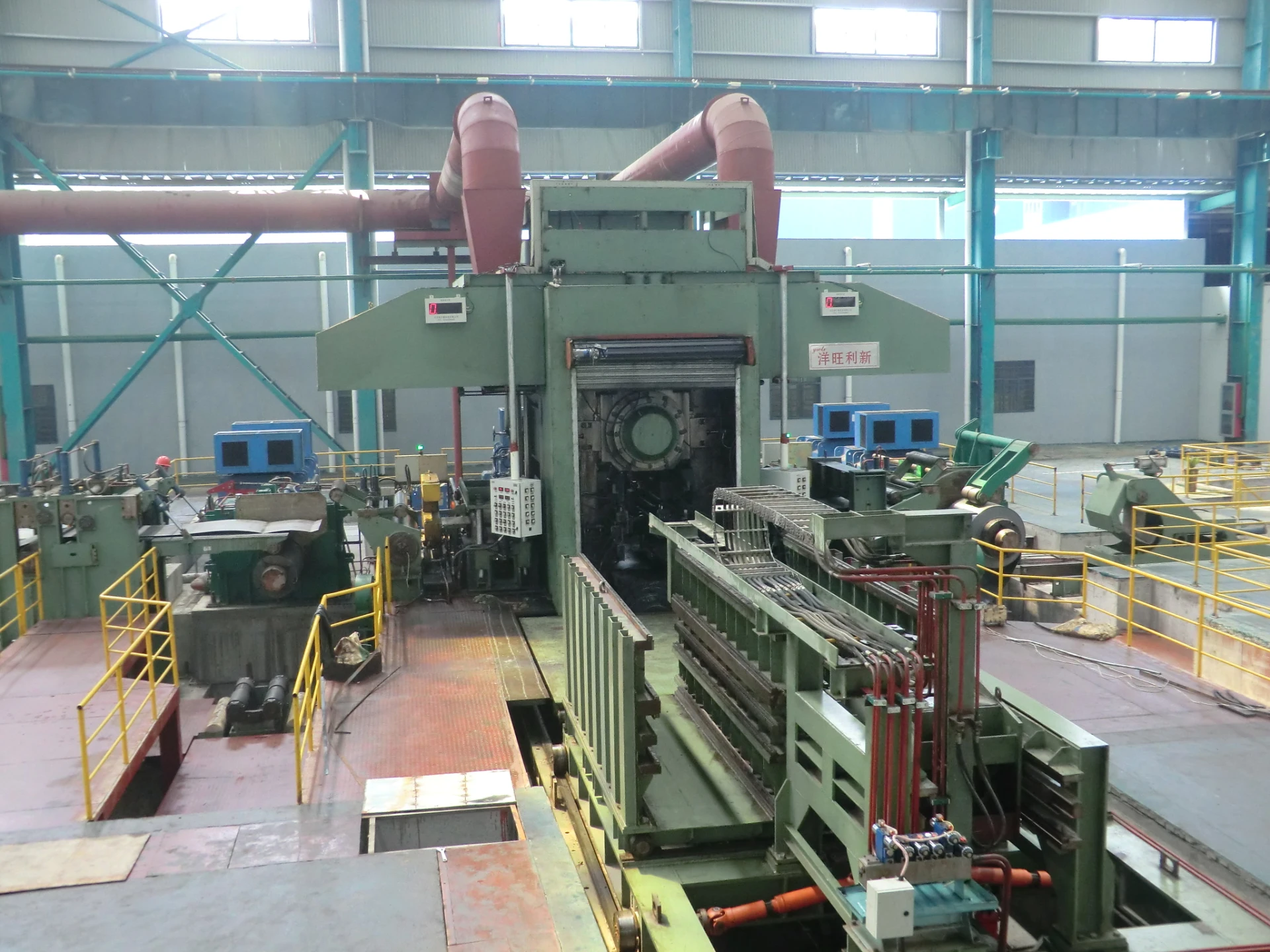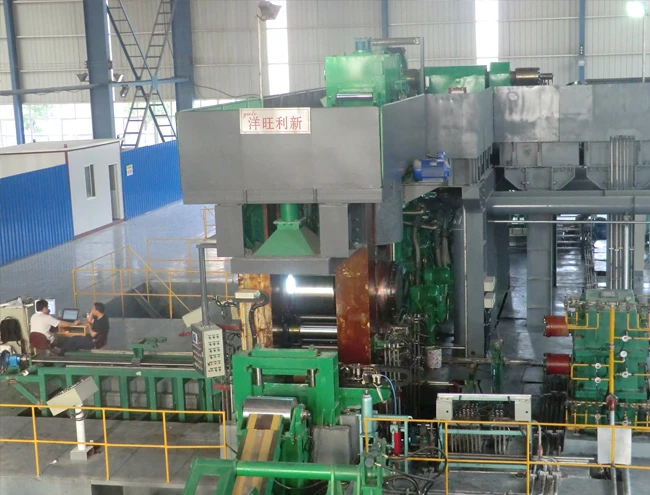
Roll Bonding Cladding Enhanced by GPT-4 Turbo Tech
آگوست . 03, 2025 10:20
Back to list
Roll Bonding Cladding Enhanced by GPT-4 Turbo Tech
Industry Focus
Metal cladding through roll bonding cladding technology is transforming sectors like petrochemicals, metallurgy, water supply, and offshore engineering. As demands for high-strength, corrosion-resistant, and cost-effective materials grow, composite solutions integrating advanced hot roll bonding cladding and clad pipe welding are witnessing accelerated adoption. According to Grand View Research, the global clad pipes market size was valued at USD 2.9 billion in 2022 and is projected at 6.1% CAGR until 2030.
What is Roll Bonding Cladding?
Roll bonding cladding is an advanced metallurgical process that permanently bonds two or more dissimilar metals into a composite plate or pipe via high-temperature, high-pressure rolling. This creates a material combining the superior corrosion resistance of the clad layer (such as stainless steel, titanium, or nickel alloys) with the mechanical strength and economy of a carbon or alloy steel substrate.
Technical Parameters & Industry Standard Reference
Leading international standards for roll bonded clad products include ASTM B898, EN 13445-2, ISO 9001 Quality Management, and ANSI/ASME codes. The below table compares key technical metrics of roll bonding cladding, hot roll bonding cladding, and clad pipe welding:
| Parameter | Roll Bonding Cladding | Hot Roll Bonding Cladding | Clad Pipe Welding |
|---|---|---|---|
| Typical Clad Layer Thickness | 2-50 mm | 2-20 mm | 3-10 mm |
| Bond Strength | >210 MPa (ISO 15614-7) | >120 MPa | Up to 160 MPa |
| Clad/Substrate Material Options | 304/316L SS, Ni, Ti, Zr, Cu, Duplex, C22 | Stainless, Ni alloys | Stainless/Carbon, Nickel/Carbon |
| Production Efficiency | High (large plates, seamless tubes) | Moderate | Medium - depends on weld |
| Long-term Corrosion Resistance | Excellent (as per ASTM B898) | Good | Average (HAZ zones possible) |
| Typical Applications | Pressure vessels, pipelines, heat exchangers | Pressure vessels, tanks | Pipes for Oil & Gas, water, chemical |
| Manufacturing Certification | ISO 9001, PED, ASME, DNV-GL | ISO 9001, ASME | ISO 15614-7 |
*All figures sourced from metallurgical research archives and product data sheets: ISO, ASME, and ASTM standards.
Industry Trends & Market Demand (2024-2030)
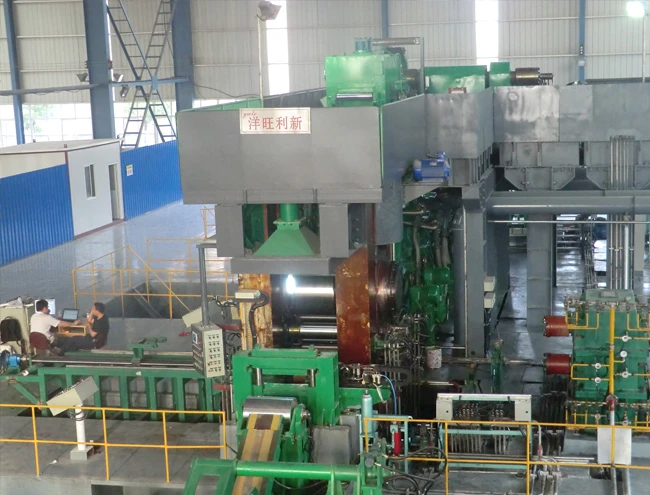 - Robust downstream demand from petrochemical, LNG, desalination, and renewables sectors (annual growth rate for clad pipes in oil & gas: 7.2% as per IMARC).
- Robust downstream demand from petrochemical, LNG, desalination, and renewables sectors (annual growth rate for clad pipes in oil & gas: 7.2% as per IMARC).
- Increasing adoption of roll bonding cladding in critical installations due to stricter anti-corrosion and safety regulations.
- Ongoing R&D investments are fostering superior alloys (e.g., Ni-Cr-Mo, super-duplex).
- High integration of CNC automation for better dimensional accuracy and repeatability.
Complete Roll Bonding Cladding Manufacturing Process
Raw Material Preparation
Substrate & clad plates (e.g., Q345R + 316L SS)
→
Surface Treatment
Grinding, degreasing, pickling per ISO 8501
→
Stacking & Welding
Edge weld or tack weld to ensure positioning
→
Vacuum Sealing
Eliminate oxidation; maintains clean interface
→
Heating
Heat to 950-1170°C (monitored per EN 10204)
→
Rolling (Hot/Cold)
Cladding Rolling Mill - progressive reduction
→
Cooling & Post-Process
Air/water quench; ultrasonic testing, flattening
Visualization:
Watch Roll Bonding Cladding Process Animation »
Product Spotlight: Cladding Rolling Mill
The Cladding Rolling Mill from Beijing YW Industrial is engineered explicitly for large-scale roll bonding cladding plate production. Precision-machined frames, advanced electronic controls, and robust metallurgical engineering allow for processing of various composite materials, conforming to ISO 9001:2015, ANSI, and PED standards.
| Model | Max Plate Width | Rolling Force | Precision (Flatness) | Material Thickness Range | Productivity | Surface Finish | Control System |
|---|---|---|---|---|---|---|---|
| YWLX-2500CR | 2500 mm | 5000 T | <0.04 mm/m | 6-65 mm | 1.6 t/min | RA < 0.55 μm | CNC + PLC HMI |
| YWLX-3100CR | 3100 mm | 7500 T | <0.03 mm/m | 8-90 mm | 2.2 t/min | RA < 0.50 μm | CNC + Cloud |
*All technical specifications from manufacturer data sheets. Configurations customizable based on project requirements.
Supply Chain: Manufacturer Comparison Table (Roll Bonding Cladding Solutions)
| Company | Main Certification | Core Product | Production Capacity | Key Application Area | Years in Operation |
|---|---|---|---|---|---|
| Beijing YW Industrial | ISO 9001, PED, ASME U | Cladding Rolling Mill | 25,000 t/yr | LNG, Petrochemical, Power | 18 |
| Nippon Steel (Japan) | ISO 14001, JIS, API | Clad Plate & Coil | 32,000 t/yr | Oil & Gas, Marine | 61 |
| Butting (Germany) | EN 13445-2, ISO 9001 | Clad Pipe, Plate | 15,000 t/yr | Onshore/Offshore Pipeline | 242 |
| JFE Steel (Japan) | ISO 9001, API 5LD | Hot Roll Bonded Plate | 20,000 t/yr | Pressure Vessel, Heatexchanger | 68 |
*Certifications verified via official supplier datasheets as of Q1/2024.
Material & Application Data: Roll Bonded Clads
- Clad Layer Materials: 316L, 304L, Duplex (2205/2507), Alloy 625, Ti Gr. 2, CuNi alloys
- Substrate Materials: Q345R, 16MnDR, A516 Gr.70, P265GH, ASTM A387
- Standard Testing: Ultrasonic & X-ray (per ASTM A578/A435), Shear Test (ASTM A264)
Customized Solutions for Industry Challenges
Common Project Needs: Vessel plate for corrosive acidic storage, superheater tubes for thermal power, resistant pipes for water desalination plant, or low-maintenance LNG transfer lines. A roll bonding cladding approach often lowers lifecycle cost by 20-35% compared to full-alloy plate, while providing equal or better safety margin (as per ScienceDirect). Custom fabrication is available for plate widths up to 3200mm, lengths up to 12m, with non-standard alloys upon engineer request.
Application Targeting Table:
| Industry | Application | Clad/Substrate | Cladding Tech | Performance Gain |
|---|---|---|---|---|
| Petrochemical | Pressure Vessel Shells | 316L/Q345R | Hot Roll Bonding | Corrosion resistance up by 18x over carbon steel |
| Desalination | Pipes/Valves | Duplex/Q345R | Roll Bonded Clad Pipe | Enhanced Anti-Cl2 & seawater lifespan |
| Thermal Power | Boiler Tube Plates | Alloy 625/A516 | Roll Bonding Cladding | Oxidation & thermal cycling performance |
| Water Supply | Pump Casings | Ti Gr.2/A516 | Clad Pipe Welding | Biofouling & corrosion resistance long-term |
Field Experience & Case Studies
Case A: Large Oil Refinery, Middle East (2022)
Project delivered 760 tons of 316L/Q345R roll bonded clad vessels, deployed in hydrotreating reactors and sour water strippers. After 18 months of service, UT and magnetic flux tests showed no bonding delamination or local corrosion (per ASTM A578). Use of Cladding Rolling Mill improved production scheduling and drastically minimized welding seams.
Project delivered 760 tons of 316L/Q345R roll bonded clad vessels, deployed in hydrotreating reactors and sour water strippers. After 18 months of service, UT and magnetic flux tests showed no bonding delamination or local corrosion (per ASTM A578). Use of Cladding Rolling Mill improved production scheduling and drastically minimized welding seams.
Case B: Desalination Plant, Southeast Asia (2021-23)
Supplied duplex clad pipes and plate through hot roll bonding cladding. Feedback revealed maintenance intervals extended by 2+ years due to outstanding chloride pitting resistance.
Supplied duplex clad pipes and plate through hot roll bonding cladding. Feedback revealed maintenance intervals extended by 2+ years due to outstanding chloride pitting resistance.
Case C: North China Metallurgical Institute - Joint R&D
Analytical simulation of roll bonding cladding with new Ni-Ti alloys (refer ScienceDirect) showed 63% higher fatigue lifetime and 51% reduction in HAZ (heat affected zone) width compared to traditional fusion welding.
Analytical simulation of roll bonding cladding with new Ni-Ti alloys (refer ScienceDirect) showed 63% higher fatigue lifetime and 51% reduction in HAZ (heat affected zone) width compared to traditional fusion welding.
Warranty, Delivery, and Support
Lead Time: Standard plate rolling machines: 8-10 weeks ex-works; custom order: 12-16 weeks.
Warranty: 24 months for Cladding Rolling Mill, extendable with service package. All machines backed by ISO/ASME conformity warranty.
Support: 24/7 technical hotline; on-site supervision available (per ASTM A578 and ISO9001 service practices). Remote real-time process diagnostics for CNC models.
Warranty: 24 months for Cladding Rolling Mill, extendable with service package. All machines backed by ISO/ASME conformity warranty.
Support: 24/7 technical hotline; on-site supervision available (per ASTM A578 and ISO9001 service practices). Remote real-time process diagnostics for CNC models.
FAQ: Professional Insights into Roll Bonding Cladding
Q1. What clad layer thicknesses can be achieved by roll bonding cladding?
A: Typically 2-50 mm, depending on end-use. Offshore pressure shell plates prefer thicker (8-20 mm), while heat exchanger plates tend toward 2-4 mm.
Q2. Which surface preparation is essential for optimal metallurgical bonding?
A: Mechanical grinding, degreasing, and acid pickling (per ISO 8501-1) to achieve clean, oxide-free interfaces—this maximizes roll-bond strength.
Q3. What non-destructive testing (NDT) validates clad bonding integrity?
A: Ultrasonic Testing (UT) per ASTM A578/A435, X-ray for welds, and shear testing under ASTM A264 for bond strength monitoring.
Q4. How does roll bonding differ from explosion cladding?
A: Roll bonding uses compressive force/heat for continuous, uniform bonding; explosion cladding uses controlled detonation, suited for smaller, high-hardness parts.
Q5. What installation standards must clad pipes meet?
A: For oil & gas, refer to API 5LD, ASME B31.3, and ISO 3183. For water pipelines, ISO 2531 and EN 545 are standard.
Q6. Are Cladding Rolling Mills compatible with smart factory solutions?
A: Yes. All CNC/PLC models support remote diagnostics, IoT integration, and customizable interfaces for MES/ERP connectivity.
Q7. What quality documentation accompanies deliveries?
A: Full EN 10204 3.1/3.2 MTC, NDT reports (UT/X-ray), dimensional charts, chemical composition certificates, and traceability logs as per PED requirements.
Conclusion: Why Choose Roll Bonding Cladding?
With stricter industry standards, demand for longer-lasting, cost-efficient composite plates and pipes is surging. Technical advancements in roll bonding cladding—especially when executed on precision machinery like the Cladding Rolling Mill—deliver not only superior safety margin but also notable operational savings.
By combining state-of-the-art metallurgy, ISO/ASME compliance, and intelligent control, this technology is the compelling solution for next-generation infrastructure, from energy to water to advanced process industries.
By combining state-of-the-art metallurgy, ISO/ASME compliance, and intelligent control, this technology is the compelling solution for next-generation infrastructure, from energy to water to advanced process industries.
References & Further Reading:
- [1] Grand View Research. (2024). Clad Pipe Market Size, Share & Trends. Retrieved from https://www.grandviewresearch.com/industry-analysis/clad-pipe-market
- [2] ScienceDirect. (2021). Review of clad plate fabrication techniques. Read article
- [3] CIMAC Circle World Power Forum. (2023). "Trends in Clad Component Manufacturing." Forum
- [4] ASTM International, B898, A264, A578 - Standard Test & Practice for Clad Metals. ASTM official
- [5] Industry resource: Metalclad Forums - Practical Case Discussions. ASMI Forums
Prev:
This is the first article
Latest news
-
Indian Clients Visit YWLX to Inspect Skin-pass MillNewsJun.22,2025
-
Typical Products from Reversing Cold Rolling ProcessNewsMay.26,2025
-
Surface Finish Improvement through Skin Pass RollingNewsMay.26,2025
-
Integration of AGC Systems in Modern Cold Rolling MillsNewsMay.26,2025
-
Cold Rolling in the Context of High-Strength Steel DemandNewsMay.26,2025
-
AGC in Hot Rolling Mills: Challenges and SolutionsNewsMay.26,2025
-
Why Reversing Cold Rolling Mills Are Ideal for Specialty MetalsNewsMay.13,2025
Related Products


